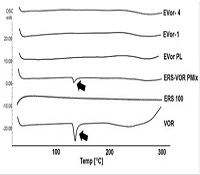
Ebru Basaran
Anadolu University, Turkey
Title: Polymeric nanoparticles for antifungal ocular theraphy
Biography
Biography: Ebru Basaran
Abstract
Voriconazole (VOR) is a triazole antifungal derived from fluconazole is very active against various fungi including those resistant to fluconazole.1 Treatment of ocular fungal infections remains problematic because of the relatively short list of available therapeutic agents.2 Limited ocular bioavailability of active agents due to the characteristic properties of the eye also limits the efficacy of the treatment. Therefore main approaches for the enhancement of ocular bioavailability of the formulations applied are enhancement of the residence time of the active material at the site of action or enhancement of the ocular penetration of the primary penetration site.
MATERIALS and METHODS
Voriconazole was kindly gifted by Deva Holding (Çerkezköy, TekirdaÄŸ), Eudragit® RS 100 was purchased from Röhm Pharma Polymers (Darmstadt, Germany) and methanol was from Merck (Darmstadt, Germany). All other chemicals used were analytical grade.
FORMULATION OF POLYMERIC NANOPARTICLES
Spray drying method (Büchi B-190, BÜCHI Labortechnik AG, Switzerland) was used for the preparation of polymer based nanoparticles.4 Compositions of the selected formulations were given in Table 1.
CHARACTERIZATION STUDIES OF POLYMERIC NANOPARTICLES
SEM, particle size, polydispersity index, zeta potential analyses were performed. In order to evaluate changes of the polymeric structure DSC analyses were also performed. A validated HPLC method was used for the determination of incorporated PTX.
RESULTS and DISCUSSION
Morphological analyses showed that particles are round in shape (Figure 1).
Particle size, polydispersity index, zeta potential analyses with incorporated VOR amount of the formulations were given in Table 2.
Analyses results revealed that the particle sizes were in the nanometer range with homogenous size distribution (Table 2) with no changes in the polymeric structure (Fig. 2).
CONCLUSION
As a conclusion VOR incorporated polymeric nanoparticles were successfully formulated by spray drying method aiming efficient treatment of ocular fungal infections. In vitro and in vivo efficacy of the formulations will be studied as the second part of the study.


Figure: SEM image of polymeric spheres Figure: DSC analyses of the formulations prepared

